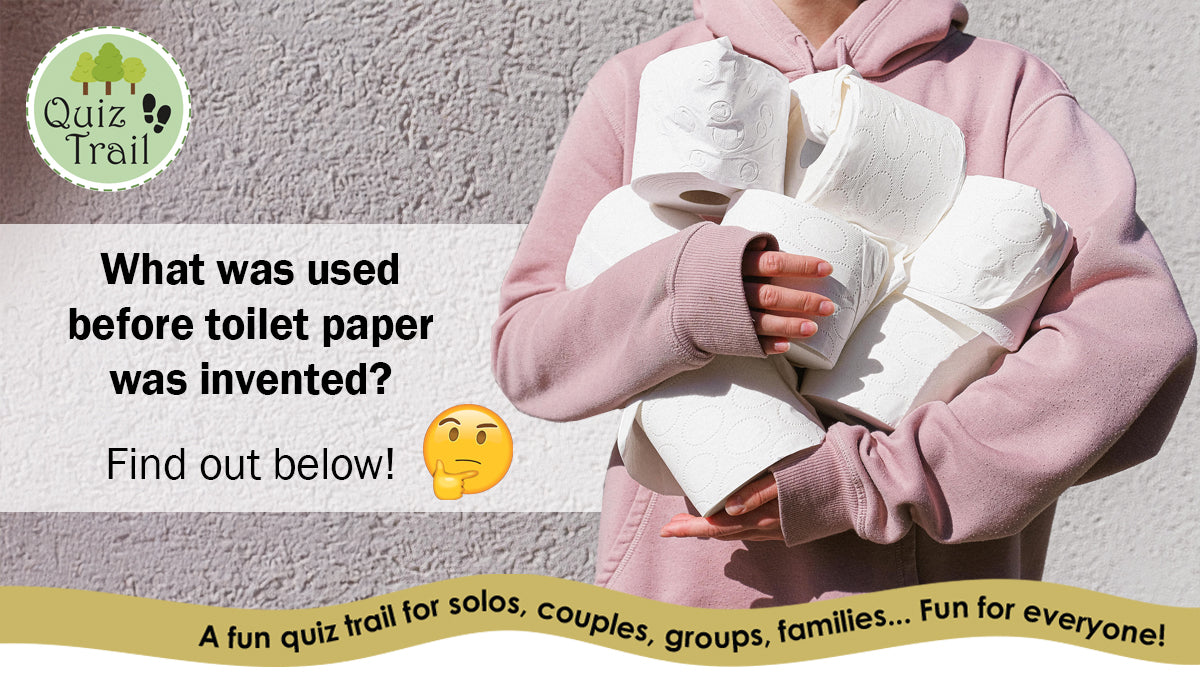Before the invention of modern toilet paper, people across different cultures and historical periods employed a variety of materials and methods for personal hygiene. These practices were largely influenced by local resources, cultural norms, and social status.
Take your choice ...
• Old anchor cables and rope: Pirates and sailors would have taken any old spare bits of rope they came upon - it was rather course and uncomfortable - but softened up after several washes and being hung out to dry. Sailors would sell old, damaged rope for a small amount of money when they were ashore - ’money for old rope’. This rope, though worn, could still be useful for various tasks on land - but let’s hope they didn’t sell the ‘used’ rope ...
• Moss: In medieval Iceland, peat moss was favoured for its softness, absorbency, and natural antiseptic properties.
• Pages from old books or catalogues: In Tudor England books were widely used - particularly after King Henry VIII dissolved the monasteries in the 1500s. Thousands of books remained in chapel libraries and so were used as Tudor Toilet Paper. In 18th and 19th century America, newspapers and catalogues like the Sears Roebuck catalogue were repurposed for hygiene. Some publications even included holes for hanging in outhouses! Some said the January catalogues were popular as they were usually thicker editions for the year ahead … and they lasted right through to harvest time! When printers started using glossy pages many wrote to complain they were no longer suitable for their toilet needs.
• Coconut shells: In Hawaii coconut shells were used in complete halves. Once used they were discarded.

• Mussel shells: Used in coastal and arid regions where other materials were scarce. While effective, they could be abrasive and uncomfortable.
• Newspaper: Many a family Sunday was spent with children cutting the broadsheets into 16 pieces and hanging them up in the outside toilet. It wasn’t until the late 1800s that Thomas Crapper patented a new valve and siphon system that improved toilet functionality and reduced smells, leading to wider adoption in affluent Victorian homes.
• Lace: The wealthy in medieval Europe often used washable cloths made of wool or lace - soft but expensive and so these were cleaned and reused. No doubt the cleaning side done by servants rather than the wealthy themselves!
• Sand: Favoured in the dry, arid middle east and in plentiful supply.

• Corn cobs: In rural America, dried corn cobs were a popular choice. They were reusable and often hung in outhouses for convenience.
• Hay and straw: Commonly used in various regions due to their availability and softness. However, selecting the wrong type of leaf could lead to discomfort or irritation. In the middle ages hay and straws were packed into a light ball before use.
• Hemp: French royalty found the soft fibres of hemp very soft and luxurious. These dried fibres of the cannabis plant were almost like cotton wool today. Oh to be wealthy.
• Wool: Wealthy Romans preferred soft wool soaked in rosewater for cleansing. Vikings also favoured this method and grabbed a handful from fields when they spotted some - tucked away for later. Much of England was farmland so there was ample supply.
• Hygiene sticks: In Ancient China wooden or bamboo sticks wrapped in cloth have been discover - dating back over 2,000 years. These were used for cleaning and have been found in archaeological sites along the Silk Road.
• Early toilet paper: By the 6th century AD, paper was used for hygiene, with mass production for the imperial family recorded in 1393.
• Sponge on a stick: In Ancient Rome a communal sponge affixed to a stick, soaked in vinegar or saltwater, used in public latrines. After use, it was rinsed and returned for the next person.
• Feathers: Rich Romans didn’t like to share the sponge on a stick and so used ostrich feathers. Later European royalty preferred to use goose feathers.
The invention of modern toilet paper: Purpose-made toilet paper first appeared in America in 1857, and by 1880, it was being produced in England. The British Perforated Paper Company started production of toilet paper in 1880, marking the arrival of the product in Great Britain. While the concept of toilet paper on a roll was popularized by the Scott brothers in 1890, it took time for the product to become widely accepted and used in the UK.
These diverse methods underscore the essence of human adaptability and the influence of environment and culture on daily necessaries!






